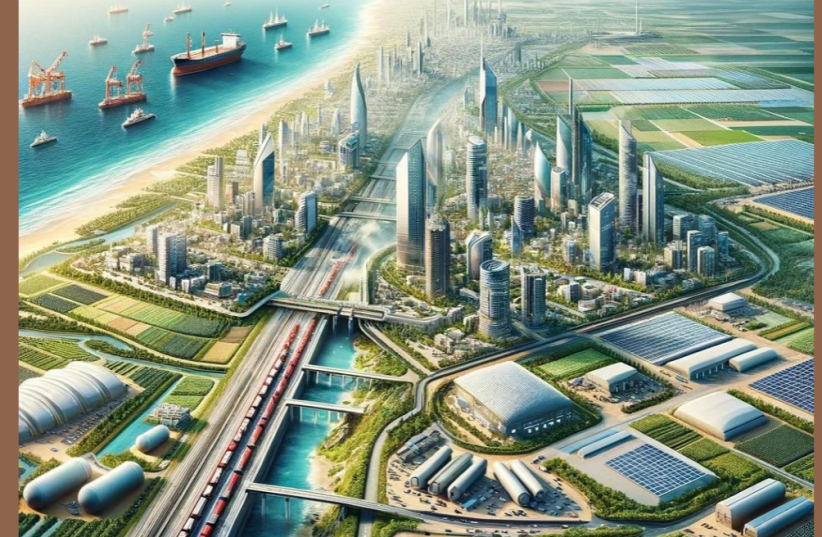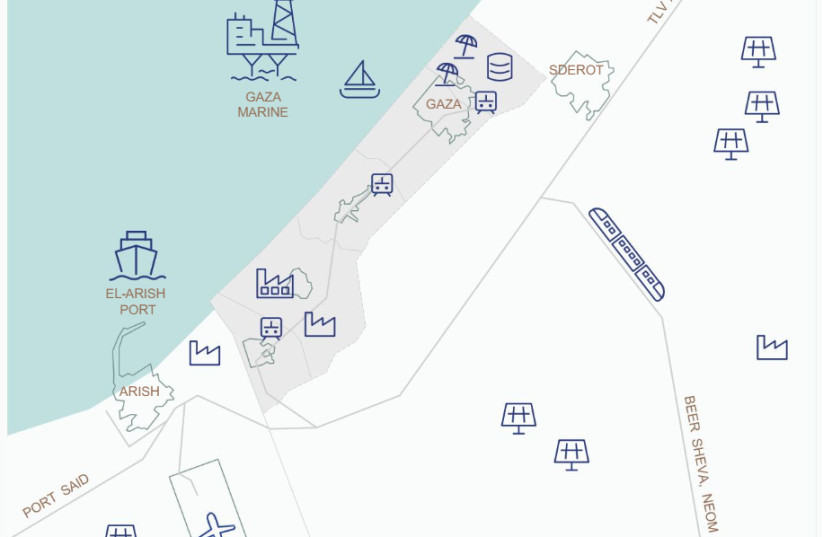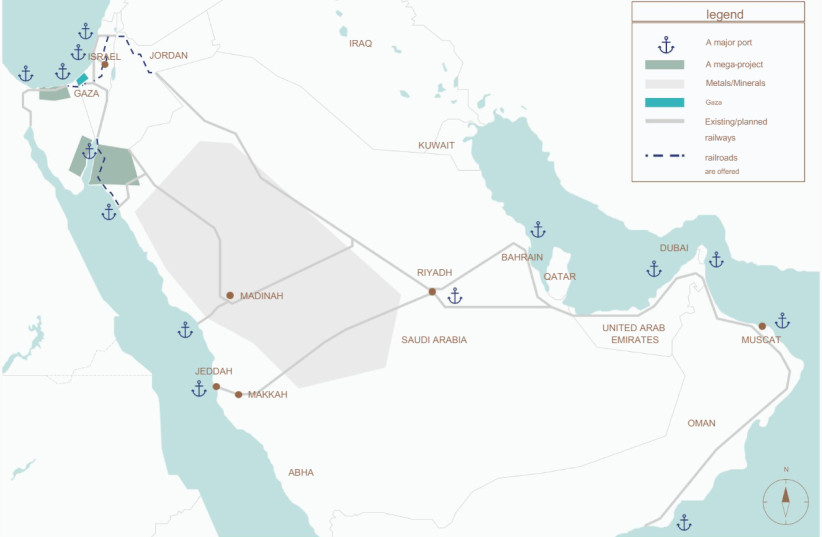There has been much debate about exactly what Israel's plans for a post-war Gaza would look like. Documents from the Prime Minister's Office were published online on Friday, showing Israel's plan to revitalize the Gazan economy.
The documents published online showed Prime Minister Benjamin Netanyahu's attempt to bring about a lasting peace and reintegrate Gaza into the regional economy through large infrastructure and economic investment.
The plan laid out the goal of rebuilding Gaza in order to moderate its politics.
It called Gaza an "Iranian outpost" that "sabotages emerging supply chains" and "thwarts any future hope for the Palestinian people."
The plan also highlighted the historically central place that Gaza held in the East-West trade routes, being on both the Baghdad-Egypt trade routes and the Yemen-Europe trade routes.
Three steps to success
According to the documents, there are three steps for returning Gaza to self-governance.
The first step, titled Humanitarian aid, is planned to last 12 months. Israel will create safe areas free of Hamas control, starting in the north and slowly spreading south.
A coalition of Arab countries (Saudi Arabia, UAE, Egypt, Bahrain, Jordan, and Morocco) will apportion and supervise humanitarian aid in the safe areas
Gazan Palestinians will run the safe zones under the supervision of the Arab states.
Stage two would occur in the next five to ten years. The plan is to move Israeli security responsibility to Israel, while the Arab Coalition will create a multilateral body called the Gaza Rehabilitation Authority (GRA) to oversee the reconstruction efforts and manage the Strip's finances.
The GRA is to be run by Gazan Palestinians and will take responsibility for managing the safe areas.
This will be done in coordination with the implementation of a "Marshall Plan" and a deradicalization program.
Stage three, termed "Self-governance", would see Israel retain the right to act against "security threats."
Power would slowly be transferred to either a local Gaza government or a unified Palestinian government (including the West Bank). However, this is contingent on the successful deradicalization and demilitarization of the Gaza Strip and will be subject to agreement by all parties.
The final step would be for the Palestinians to fully manage Gaza independently and join the Abraham Accords.
Part of the rebuilding effort will involve "rebuilding from nothing" and designing new cities from scratch, which will feature modern designs and planning.
The plan presented several advantages for the countries involved. For Israel, the major advantage, other than security in the south, is normalization with Saudi Arabia.
Major advantages for the Gulf states that take part would include defensive pacts with the US and unfettered access to Gaza's Mediterranean ports through railways and pipelines. The plan also says that if such an intervention is successful in Gaza, it can be repeated in Yemen, Syria, and Lebanon.
For the Gazan population, the biggest advantages after the end of Hamas control would be massive investment in the Strip and huge employment opportunities, as well as a pathway to reunify with the West Bank and achieving self-governance.
The regional plan
The wider regional plan is to ramp up the mega-projects such as NEOM in Saudi Arabia and implement them in the Sinai.
This would enable Gaza to function as a significant industrial port on the Mediterranean, which would be the main entrepot for the export of Gazan goods, but also Saudi oil and other raw materials from the Gulf.
The plan also calls for the creation of a massive free trade zone covering Sderot-Gaza-El Arish, which would allow Israel, Gaza, and Egypt to take advantage of the location, co-operatively.
Combining the new infrastructure investments and integration of the region, the newly discovered gas fields just north of Gaza would help support the burgeoning industry.
Solar energy fields would also be built in the Sinai along with desalination plants that will help to offset climate change.
One idea put forward by the plan is to turn Gaza into a key hub for electric vehicle manufacturing. The hope is that all of this integration can turn not just Gaza but also El-Arish and Sderot into a competitor with cheap Chinese manufacturing.


